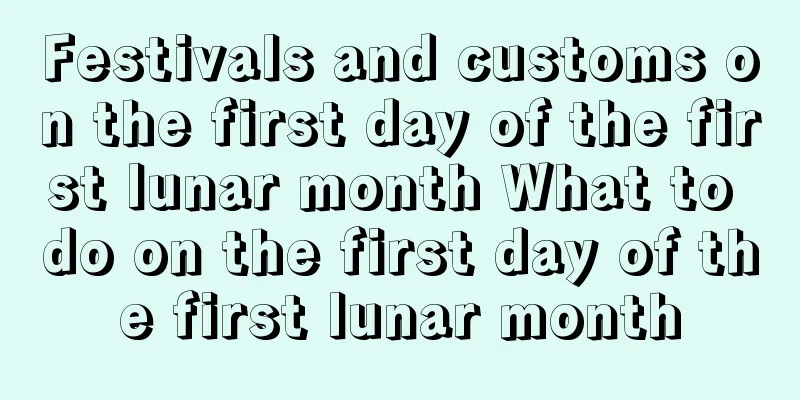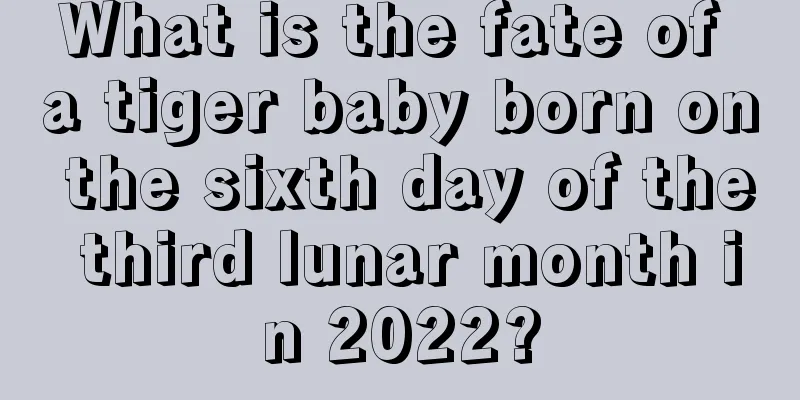Festivals and customs on the first day of the first lunar month What to do on the first day of the first lunar month

|
Chinese people have always attached great importance to traditional customs and culture. There are many taboos and etiquette in some important festivals. The first day of the new year is coming soon. What are the festivals and customs of the first day of the first lunar month? What should we do on the first day of the first lunar month? Festivals and customs on the first day of the first lunar month The first day of the first lunar month is the first day of the Spring Festival, the beginning of the lunar year, the beginning of the month, and the beginning of the day, so it is called "Sanyuan"; because it is also the morning of the year, the month, and the day, it is also called "Sanchao"; and because it is the first new moon day, it is also called "Yuanshuo". The first day of the first lunar month is also known as Shangri, Zhengchao, Sanshuo and Sanshi, which means that the first day of the first lunar month is the beginning of the year, month and day. What to do on the first day of the Lunar New Year? 1. Eat rice cake <br/>Eating rice cake on the first day of the first lunar month is a Chinese tradition, symbolizing "prosperity on a daily basis." The styles of rice cakes include square-shaped yellow and white rice cakes, which symbolize gold and silver, and imply getting rich in the New Year. |
>>: Can I get engaged in the first month of the lunar year? What is the best day for engagement?
Recommend
Analysis of the 12 constellations: Which constellations are the most entangled
Love is a time-consuming and entangled thing. How...
7 major criteria for women to analyze their appearance to help their husbands
Women can be the backup force of the family, or t...
Who is the most powerful among the twelve zodiac signs? The strongest ranking among the zodiac signs is here
Who is the most powerful among the twelve zodiac ...
Test whether you love someone or not. Test whether he really loves you or just pretends to tolerate you.
Sometimes blindly tolerating someone may not nece...
December 27, 2018 lunar calendar
How about getting married on December 27, 2018? I...
Can people with conflicting zodiac signs get married? What does conflicting zodiac signs mean?
There are twelve zodiac signs, and some of them a...
Western restaurant names, nice and elegant Western restaurant names in Chinese and English
What’s a nice name for a Western restaurant? As a...
Which day in February of the lunar calendar in 2022 is suitable for moving? The rules and taboos of moving and relocation
There are many folk sayings about moving. Moving ...
Top 5 Zodiac Signs Most Likely to Be Single
Some zodiac signs are most likely to be single, n...
Dreaming about cats giving birth to kittens
What does it mean to dream about a cat giving bir...
Is the 29th day of the first lunar month in 2022 a good day for a haircut?
Whenever the ancients had something important to ...
The most prosperous office location for the Rooster Zodiac sign is analyzed
What is the best orientation for the office for p...
Virgo October 2014 Horoscope: There may be a risk of divorce
Virgo's fortune in October 2014 is not ideal ...
The type of girls that the 12 zodiac boys like are clear in their goals and know what kind of women they love.
When you are in love, it is important to know wh...
The zodiac sign that can bring happiness to women
Every woman hopes that the man around her can giv...









